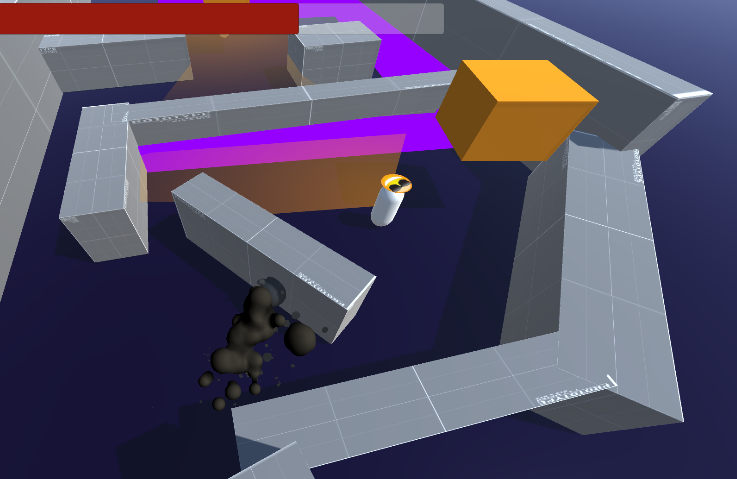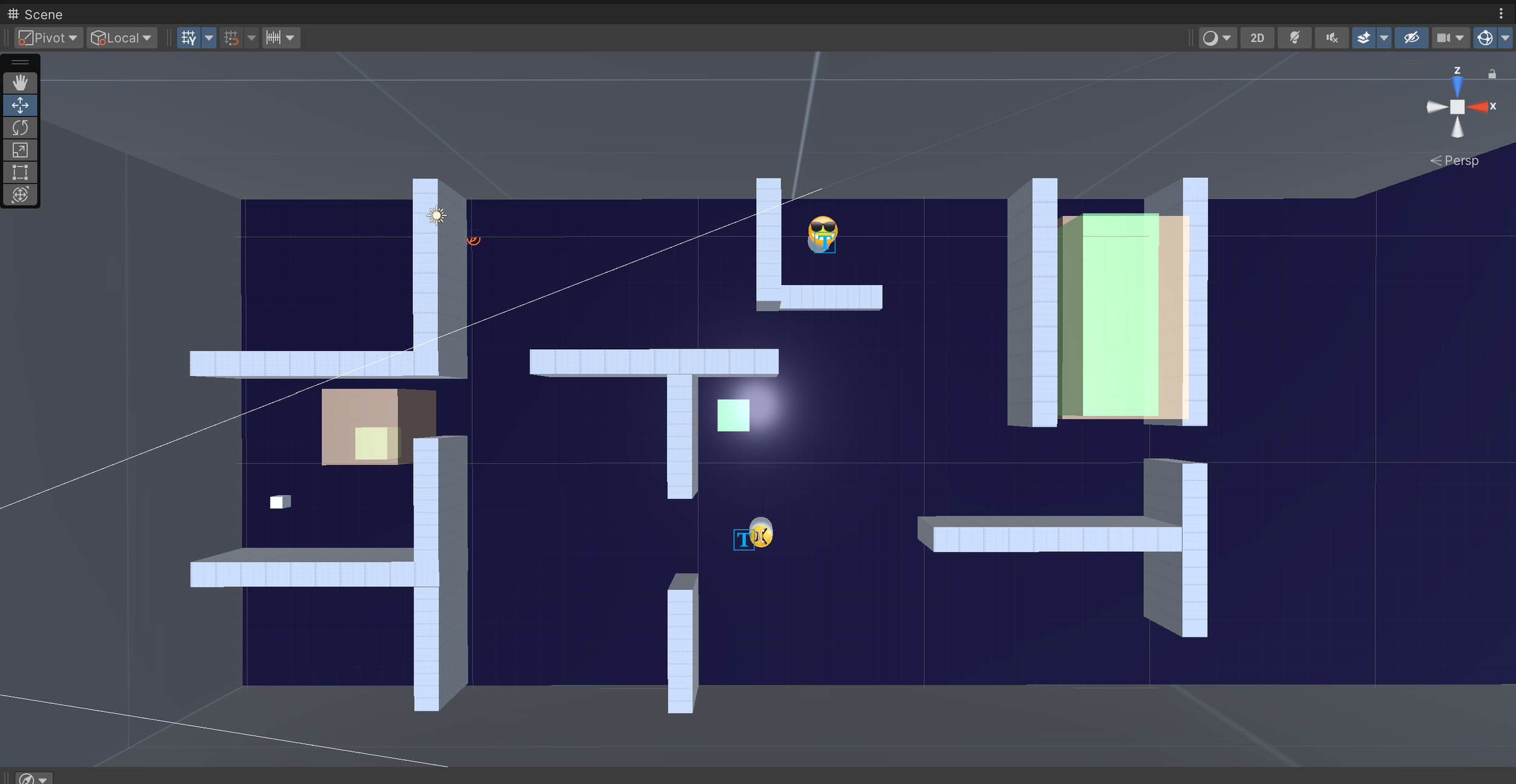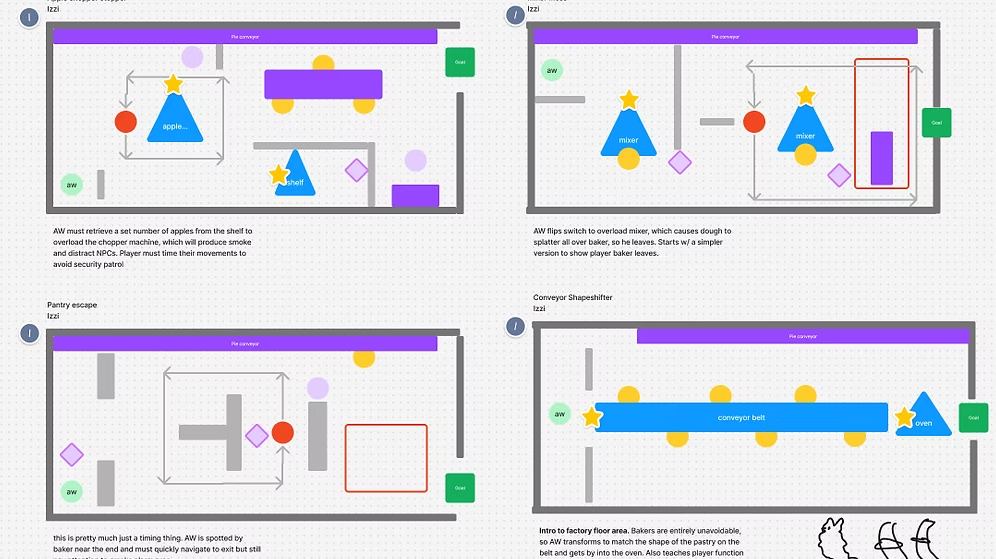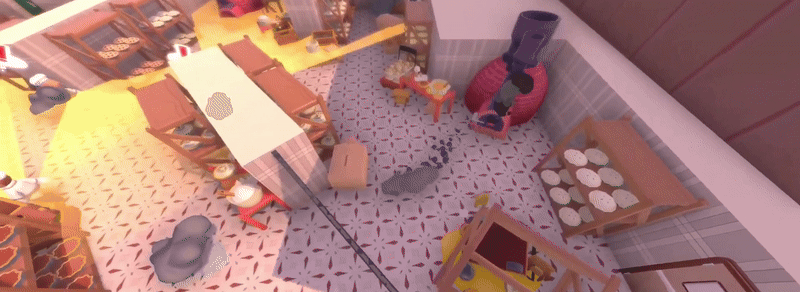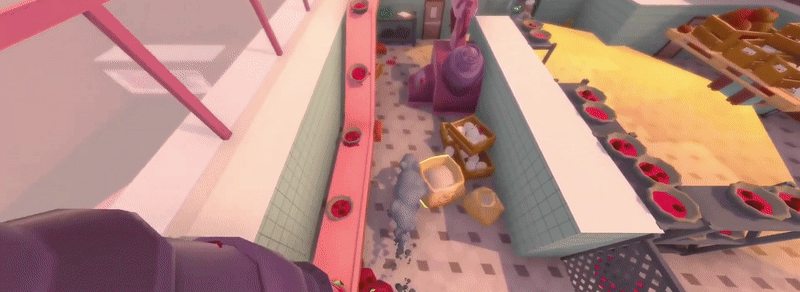
Smoke Break!
Role: Game Design Lead
Duration: May 2024-May 2025
Engine: Unity
Studio: USC Games
Awards: First in Interactive and second in Cinematics (Collegiate Games Challenge), Student Game of the Year (Sage Awards)
What I did: I led a team of four designers, created puzzle and stealth layouts, led encounter, level, and gameplay design, and worked with the creative director to define the interactive experience
Overview
Smoke Break! is a lighthearted 3D stealth puzzle game where you play as Applewood — a living puff of smoke. By breaking machinery, dashing past bakers, and using smoke to grow, you can hunt down the ultimate, yet elusive, burnt pie!
This game was created as part of USC’s Advanced Games Project, my capstone class. I worked with a team of 40 students, and led the four person design team, to create Smoke Break! over the course of a year. As design lead, I set milestones and delegated tasks, used my level design skills to create puzzles and stealth layouts, led development of mechanics, interactions, and enemy behaviors, and shaped the overall interactive experience of the game. I worked directly with the creative director as well as the engineering, art, UI, and usability leads.
Our development process included writing a design document, creating prototypes to test mechanics and movement, using Figma and later greyboxing to design puzzle and stealth layouts, holding biweekly design meetings, and presenting our progress to games faculty bimonthly. This culminated in a 15-30 minute game with 4 levels that was presented at the USC Games Expo, and later won multiple awards as noted above.
From Figma
To iteration, refinement, and setdressing
Case Study - Puzzle Development
One particular challenge of this game was creating spaces that housed both puzzles and stealth layouts, in addition to encouraging players to use their mechanics and interact with the environment. To begin, my team and I created test layouts in Figma Jamboard, where we could use shapes and lines to demo our layouts and comment on eachothers’ work. I used this tool in particular to ensure that we could have a cohesive color/shape key, and to be able to import it as a “blueprint” in engine (see second image).
Once our team selected our favorite layouts, we greyboxed them in engine to test flow, interaction, difficulty, and general feel. Our weekly playtests allowed us to iterate quickly to make player centric improvements. In particular, I paid attention to how players felt both during and after solving the puzzle. Did they feel satisfied and clever, or did they brute force their way through it? Did they use all the tools at their disposal? How long did it take them to have that Aha! moment?
After months of playtesting and iteration, we worked closely with art and UI to develop the visual look and feel of the levels, utilizing set dressing and effects to highlight our interactive elements and help the player pave their path forward.
To greybox
To the final product!
Key Takeaways
Smoke Break! was my first time managing my own team, and with that came lots of challenges, learning opportunities, and growth! A particular skill I strengthened while working on this game was staying aligned on game pillars and ensuring the creative vision was maintained throughout every decision. While you’re in the weeds of development, it’s easy to lose sight of the bigger experience you’re working towards, especially when every team is sprinting towards a deadline.
To ensure our vision stayed intact, our team hung our logline on the wall and wrote it in every presentation. During our weekly design meetings or playtests, if a decision had to be made or player feedback implemented, my first test would be to see if it supports at least one of our game pillars. Practices like this helped us stay true to our intended interactive experience, and is a routine I will undoubtedly carry into my future projects.
Additionally, I learned how difficult it is to be both a team lead and a designer. As much as I love getting my hands dirty in engine, there were some weeks where I had to delegate out all in-engine tasks so I would have time for documentation, meetings, and analyzing feedback. This was tough for me at first, as I wanted to make sure our teams’ work was fairly balanced and that I was contributing to implementation work. However, through clear, consistent communication with my team, I was able to divide up tasks in the way that worked best for everyone - even if it meant leaning more on the “lead” part of lead designer for that week. Honesty, ownership, and communication were always emphasized on my team, and it resulted in a fairly smooth development process and successful deadlines.
